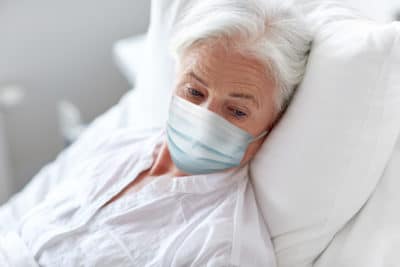Isolation and Charles Bonnet Syndrome
We don’t function well as human beings when we’re in isolation.
~Robert Zemeckis
Aging in Place
Social Isolation is taking a toll on older adults during the COVID-19 Pandemic. Nursing homes have been the epicenter of the viral onslaught of death. From the early reports out of Washington State where 18 fatalities from a single facility in Kirkland shocked the nation. Since those initial accounts from early March the numbers have skyrocketed as thousands of nursing homes and assisted-living facilities across the country morph into islands of infected elders held hostage to devastating circumstances.
“Death Pits”
Healthcare officials are taking unprecedented steps to contain the COVID-19 virus among vulnerable residents–but the efforts in many cases are falling short as body counts climb. Overall, about a fifth of the deaths from COVID-19 in the United States are tied to nursing homes and assisted living facilities (nytimes.com 4/17/2020). One of the main tools in the limited arsenal of desperate officials is social isolation.
Other problems aside (low wages, high resident to staff ratios, high turnover, less trained staff, proximity, high co-morbidities, high risks, absenteeism) older residents in institutional settings face a litany of challenges to quality of life. Socializing with family, friends, other residents, and staff, is often the only joy in an otherwise bleak existence. Government guidelines have curtailed visits for all but essential personnel, and that means no family members.
Isolation = Decline
“The risks of loneliness and isolation are so great that we don’t know if we’re causing a lot of harm by totally socially isolating people,” noted Carla Perissinotto, a Geriatrician and Associate Professor at University of California-San Francisco School of Medicine, who has studied the effects of loneliness on the health of older adults and found links to loss of mobility, dementia, cardiovascular decline and even death (source inquier.com). Families are rightly concerned not just because they miss them and are worried, but also because an extra layer of supervision/advocacy is now lost.
Charles Bonnet Syndrome (CBS)
I have a 93-year-old relative who is safe in Foster Care as the only resident in a very attentive family environment. Recently, my otherwise very stable relative has been having terrible acute bouts of visual hallucinations. She sees dead relatives, animals, and other visual images that she knows are not real–but nonetheless there.
Hallucinations in the elderly have multiple causes here are a few:
Hypoxia: (Low Oxygen Level) When there is lack of oxygen to the brain
Medications: Hallucinations and delusions can be medication-induced
Electrolyte Imbalances: Dehydration in the elderly
Urinary Tract Infections (UTI)
Diseases of the Eye: Cataracts and Macular degeneration
We are ruling out each one-by-one in a step-by-step process which is now challenging from a distance in the era of COVID-19. But I found one potential syndrome worth mentioning called “Charles Bonnett Syndrome.”
Charles Bonnet, a Swiss lawyer (1720-1793), first described the visual hallucinations of his grandfather who had poor eyesight, in 1769. CBS is more common than you might imagine, occurring in 40-60% of poor-sighted elderly adults. Many who suffer will not report the hallucinations for fear of be diagnosed as demented so it may go under reported. Many, like my loved one have insight into knowing the images are not real–but disturbing all the same.
What is relevant for the current pandemic is the fact that many seniors are now socially isolated for precautionary measures and it is well documented this can lead to health issues in older adults. Interestingly enough, CBS is associated with social isolation. Perhaps the brain is compensating for lack of visual and social stimulation?
This is something my loved one is experiencing; she has been living for the past 3-4 weeks in Imposed isolation. She is used to weekly family visits from us and frequent outings into the sunlight and nature. So, this could very well be a symptom of isolation.
We are talking steps to safely reintroduce socialization after a risk-benefit analysis–as well as ruling out other potential causes. It is worth mentioning if others are having the same issues with loved ones who suddenly find themselves in deprivation of social contact or stimulating environments.
________________________________________________________________________________________
“Death Pits” a term used by Betsy McCaughey the former Lieutenant Governor of New York to describe the over 6,900 lives lost in U.S. nursing homes as of 4/17/2020.

